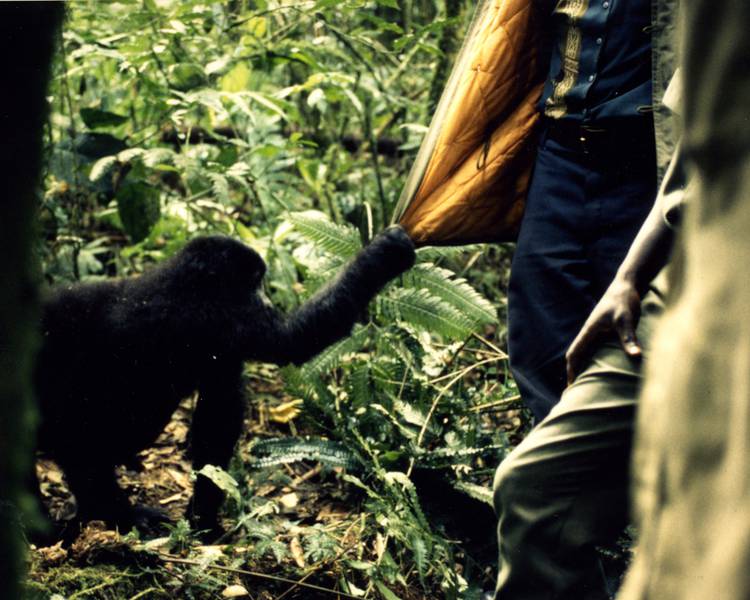Understanding Mpox Virus
Categories: Journal no. 69, Tourism, Diseases, People & Gorillas
I want to take a moment to update you on Gorilla Doctors' work across D. R. Congo, Rwanda, and Uganda regarding the mpox outbreak in the region and how we are working with our partners to minimize the risk of transmission to our eastern gorilla patients.
While there has never been a suspected or confirmed case of mpox in human-habituated gorillas, it is highly likely that gorillas are susceptible - natural infections have occurred in chimpanzees in close contact with human cases and other non-human primates (Li et al. 2023).
On August 1, 2024, we issued a memo to our partners reinforcing the critical importance of protecting human-habituated eastern gorillas from this viral pathogen through continued adherence to the IUCN Best Practice Guidelines for Health Monitoring and Disease Control in Great Ape Populations. Additionally, our teams on the ground have been participating at national-level meetings and leading education and awareness workshops with park staff - especially in eastern D. R. Congo where the outbreak is infecting the greatest number of people.
What is mpox?
Mpox is a disease caused by an orthopoxvirus called Monkeypox virus and has two distinct types, clade I and clade II. Clade I is endemic (naturally occurring) in Central Africa and causes more severe disease than clade II. A new variant of clade I mpox, "clade 1b" is the cause of the current outbreak. Mpox is spread through direct and close contact with infected people or animals, and through contact with contaminated materials. The mpox clade 1b outbreak began in eastern D. R. Congo in September 2023 and has since spread to Rwanda, Uganda, Burundi, and Kenya.
Are Eastern Gorillas at Risk?
Gorillas and humans share more than 98 % of their DNA, and 70 % (Cranfield & Ramer 2023) of the world's 1,063 mountain gorillas are habituated to the presence of people to facilitate daily contact for tourism, research, and conservation. We know from our research that gorillas are susceptible to human pathogens and this close, daily proximity increases the risk for contracting human pathogens.
Despite the risk, we also know from research on mountain gorillas that habituated mountain gorillas have a positive annual growth rate while unhabituated mountain gorillas have a negative annual growth rate (i.e. their numbers are declining; Robbins et al. 2011) - it is always a delicate balance, but these statistics point to the fact that the benefits of habituation and our ability to provide veterinary care outweigh the risks.
Most importantly, given that the transmission of mpox from people to gorillas would require close, direct contact with an infected person, the risk of transmission is quite different than that of a respiratory virus, which is more easily transmitted indirectly and from a farther distance.
Minimizing the Risk of Transmission
We are operating under the assumption that eastern gorillas are susceptible to mpox. We have informed our park partners of the potential clinical signs (based on an outbreak that occurred in wild-borne, captive chimpanzees; Brien et al. 2024). If we have a suspected case in a gorilla, Gorilla Doctors veterinarians together with park authorities will collect diagnostic samples for analysis at the Gorilla Doctors Michael Cranfield Regional One Health Laboratory in Musanze, Rwanda, and/or at government reference laboratories in the region. In the meantime, we are coordinating with our park partners to develop a contingency plan should mpox enter wild gorilla populations.
As we regularly advocate for and provide training to park staff and tourism industry professionals, the most effective way to reduce the risk of transmission is to enforce the IUCN best practice guidelines for both great ape health monitoring and tourism activities.
Some of the key measures include:
- Assure that no person (e.g. park staff, tourist) who is clinically ill is allowed to visit gorillas.
- Allow no direct contact (touching) between people and gorillas (one notable exception is when our field veterinarians must conduct a life-saving intervention, in which case they wear protective gear).
- Maintain a distance of at least 7-10 m from gorillas at all times.
- Require that a surgical face mask be worn by anyone coming within 10 m of gorillas.
- Ensure that all individuals coming into close proximity of gorillas are wearing clean clothing and disinfected footwear prior to park entry.
- Provide hand-washing facilities and supplies for all individuals entering the parks.
- Reinforce instructions that people who need to sneeze or cough should cover their mouths and noses with the crooks of their elbows rather than their hands; provide hand sanitizer.
- Ensure no personal items (i.e. clothing, toilet paper, food items) are left behind in the park.
- Thoroughly bury human waste.
Prevention of disease transmission is always better than managing a disease outbreak, so along with our partners we remain vigilant and committed to monitoring our eastern gorilla patients for all infectious disease threats.
Kirsten Gilardi
Originally published by Gorilla Doctors on 5 September 2024; for the latest on mpox visit the World Health Organization Disease Outbreak News site
References
Brien et al. (2024): Clinical manifestations of an outbreak of Monkeypox virus in captive chimpanzees in Cameroon. 2015. The Journal of Infectious Diseases 26, 229
Cranfield, M. & Ramer, J. (2023): Gorilla Doctors: A One Health/Conservation Medicine Success Story. In: Fowler's Zoo and Wild Animal Medicine Current Therapy, Volume 10. WB Saunders. Pp. 61-66
IUCN Best Practice Guidelines for Health Monitoring and Disease Control in Great Ape Populations. portals.iucn.org/library/sites/library/files/documents/ssc-op-056.pdf
Li, Kangxin et al. (2023): Animal host range of mpox virus. Journal of medical virology 95 (2), e28513
Robbins, M. M. et al. (2011): Extreme conservation leads to recovery of the Virunga mountain gorillas. PloS ONE 6 (6), e19788

